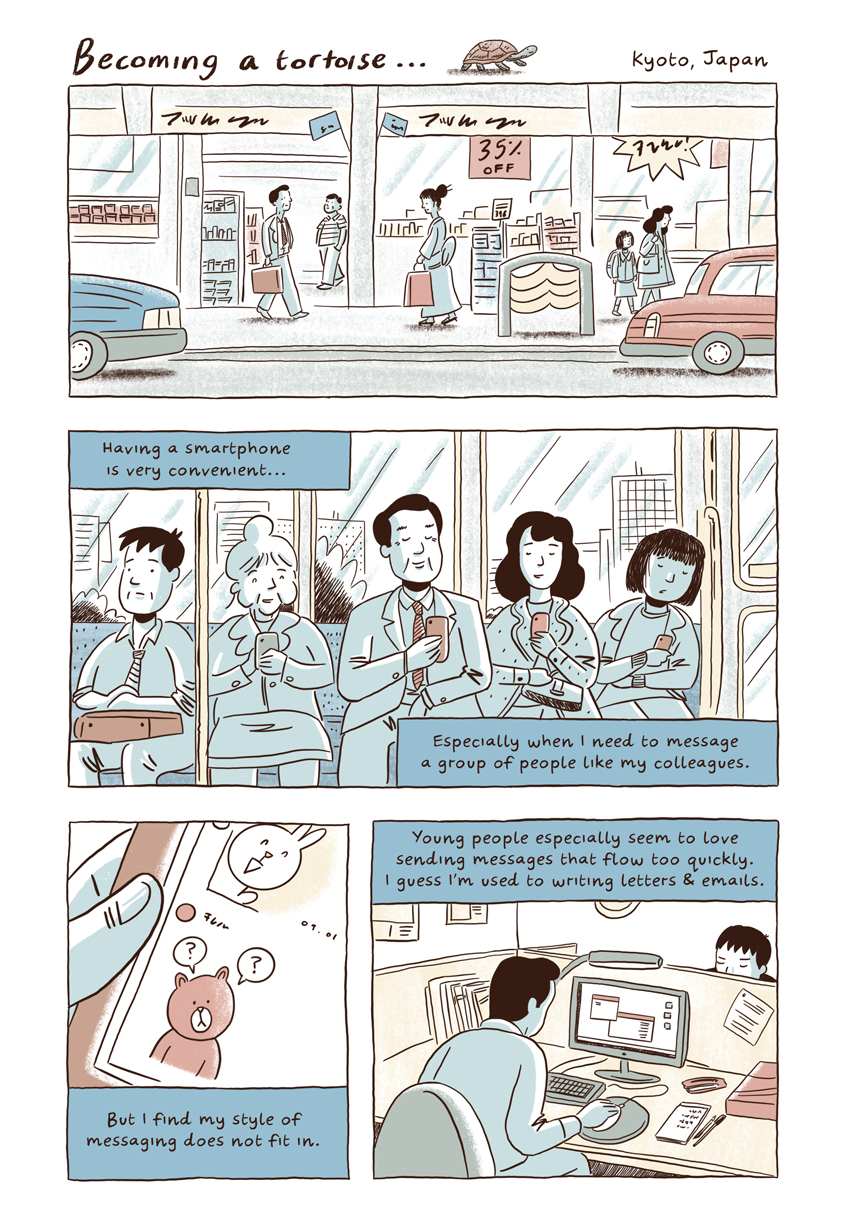Illustrating ASSA’s findings with comics – part 4
By Georgiana Murariu, on 27 September 2021
By Georgiana Murariu and Laura Haapio-Kirk
In this blog post, we present the fourth comic in our ASSA comics series, this time set in Kyoto, one of Laura Haapio-Kirk’s fieldsites. Laura undertook fieldwork here for 16 months on the intersection of ageing and smartphone use and a significant part of her research focused on the rise of visual digital communication among older adults.
One of the findings in our project is related to the rise of social media and smartphones: we found that visual digital media such as emoji and stickers have become an integral element of conversation. Increasingly conversations do not necessarily need either voice or text. It is among older women in particular that Laura found these visual elements to be perceived mostly positively, as a quick and easy way of expressing care. Stickers also mean one is less likely to make mistakes such as typos, and they also help maintain the right atmosphere in a conversation, which is very important in Japan. On the dominant messaging app called LINE, billions of emojis and stickers are sent back and forth every day. However, it is not just stickers that help uphold social norms and etiquette – one’s ‘digital public façade’ can also be upheld through their style of digital communication.
In the comic below based on one of Laura’s participants, we meet Hiro-san, a man in his early 50s who finds the smartphone convenient, but also finds that his style of communication does not fit with what is expected of him when using the smartphone. Hiro-san prefers to write long messages, just as if he was writing an email as he is used to doing in his working life. However, increasingly this style of communication does not fit with the rapid and constant exchanges he is part of in groups on LINE. He also thinks the fact that people can see when one has read a message puts more social pressure on the individual to respond quickly. In response to this sense of pressure, he develops a ‘tortoise’ persona who replies slowly, writing long messages without the use of stickers. ‘Becoming a tortoise’ online frees him from the pressure to fit in with the popular style of messaging which he feels is far too fast-flowing for him.
When this particular participant explained his ‘tortoise’ persona to Laura, she immediately could see the potential of developing the story in a comics format. Laura sent some ideas to John Cei Douglas, the artist we are collaborating with, exploring the possibility of showing the character physically changing into a tortoise costume. John responded with panels that build suspense by showing elements of the costume sequentially, only revealing the full effect in the final panel. One challenging aspect of illustrating this story was how best to show Hiro san’s long messages. Instead of presenting these long text messages visually, John has instead shown the abundance of short and quick reactive messages that Hiro-san was concerned about. We hope that the comic conveys in a playful way how smartphones can both facilitate connection and also be sites for disconnection for those who feel that they do not fit in.


 Close
Close




